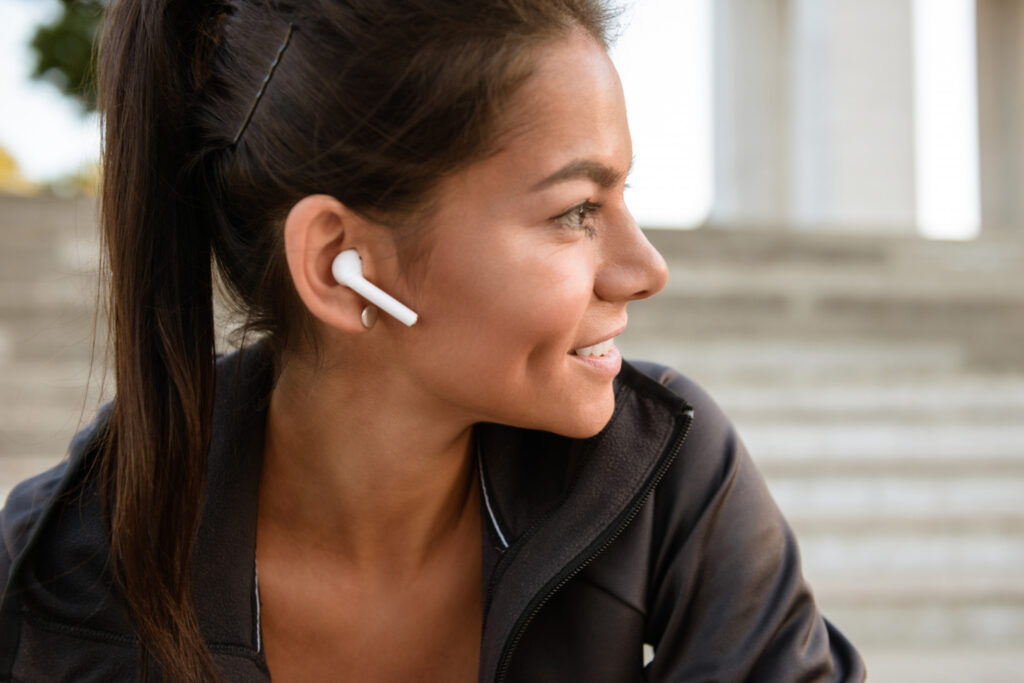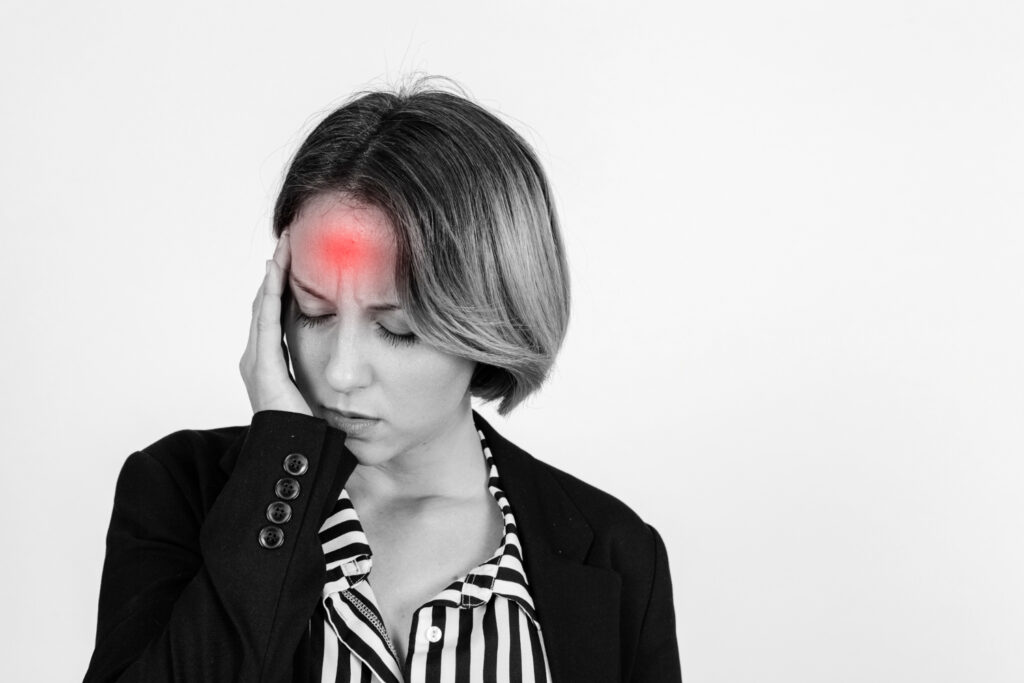How many of you use Bluetooth headphones every single day?
For workouts, calls, meditation, podcasts—even falling asleep?
You’re not alone. These small wireless devices have become an integral part of our modern lives. They’re sleek, convenient, and let’s be honest—life feels easier without tangled wires.

But here’s a question we often overlook in the name of convenience:
The world’s gone wireless but at what cost? Are Bluetooth headphones completely safe for our health?
I’m not here to scare you. I’m not against technology either. But over the years, I’ve learned that when it comes to health—what we use daily and repeatedly can start to matter more than we think.
Science is now beginning to raise some important questions about the problems of headphone use. Things like:
- Is there EMF radiation from headphones we should be concerned about?
- Can extended use lead to subtle health issues—like headache, fatigue, or even thyroid changes?
- Are there real headphone side effects we’re ignoring because they seem so minor?
So, let’s explore what current research says, practical risks to watch out for, and holistic ways to protect yourself without giving up your favorite gadgets.
How Bluetooth Headphones Work (And Why That Matters)
Let’s keep this simple.
Bluetooth is a type of wireless technology that allows your headphones to connect to your phone, laptop, or smartwatch—without wires. It works by using radiofrequency (RF) waves, very similar to what your Wi-Fi or even your microwave uses.
Most Bluetooth headphones operate on a low-energy 2.4 GHz frequency.
Now, that sounds technical—but here’s why it matters.
- Even though the energy is low, your Bluetooth device is often sitting right next to your brain or thyroid—and sometimes for hours each day. Whether you’re on back-to-back calls or bingeing a podcast, that’s prolonged exposure to EMF radiation from headphones—very close to your body’s most delicate organs.
Most of us don’t think about it because Bluetooth feels harmless. It’s not as hot as a microwave or as strong as mobile data, right? But health isn’t always about what feels strong. Sometimes, it’s about what’s constant and how close it is to your body.
This is where headphone side effects can begin to show up—subtle things like brain fog, ear pain, or even poor sleep. These aren’t always immediate or dramatic, but over time, headphone use problems can quietly build up.
So understanding how Bluetooth works is the first step to using it consciously—not fearfully, but wisely.

What Is EMF Radiation? (And Why Should You Care?)
EMF stands for Electromagnetic Fields. These are invisible waves of energy all around us. They’re produced by things like power lines, mobile phones, Wi-Fi routers…and yes, even Bluetooth headphones.
Now, there are different types of EMFs:
- Low-frequency EMFs: like those from power lines
- High-frequency EMFs: like X-rays or CT scans (which we know can be harmful in excess)
- And then there’s non-ionizing radiation: this is what your Bluetooth headphones emit
Bluetooth falls into this last category: low-energy, non-ionizing radiation.
It’s generally considered ‘safe’ because it doesn’t directly damage DNA like X-rays might.
But here’s where it gets interesting…
- Think of EMF radiation from headphones like sugar. A little once in a while? Not a big deal.
- But constant exposure, day after day, year after year? That’s when our body may start showing subtle signs of stress.
This is also called electrosmog—the invisible radiation emitted by all our electronic devices—your Wi-Fi, smartphones, Bluetooth headphones, and even your electric appliances.
In fact, the World Health Organization (WHO) and the International Agency for Research on Cancer (IARC) have classified certain EMFs as ‘possibly carcinogenic to humans.’ (Source: https://www.who.int/india/health-topics/electromagnetic-fields)
Now, don’t panic—it’s not a red alert. But it is a yellow flag worth paying attention to.
So no, you don’t need to throw away your headphones. But being aware, informed, and intentional about usage? That’s smart, and it’s what real preventive health looks like.
What Does Science Say About Bluetooth and Health?
Let’s talk about facts—not fear.
One study that really caught my attention was published in Nature (2024). (Source: Zhou, N., Qin, W., Zhang, JJ. et al. Epidemiological exploration of the impact of bluetooth headset usage on thyroid nodules using Shapley additive explanations method. Sci Rep 14, 14354 (2024). https://doi.org/10.1038/s41598-024-63653-0)
What Did the Study Look At?
- Over 600 participants filled out detailed questionnaires.
- To ensure fairness, researchers used Propensity Score Matching (PSM)—a method that balances out lifestyle and health factors to make comparisons accurate.
- They then used a powerful machine learning model (XGBOOST) to predict thyroid nodule risk.
- To make sense of it all, they ran a Shapley Additive Explanations (SHAP) analysis—this identifies which factors contributed most to the risk.
The model didn’t just guess.
- It worked with 95% accuracy (AUC = 0.95)—a strong result by any scientific standard.
Key Findings You Should Know
- Bluetooth headset usage was among the top predictors of thyroid nodule risk.
- The more hours people use their Bluetooth headphones per day, the higher their risk.
- Most people in the study were using in-ear devices, mainly to listen to music.
- Among Bluetooth users, 12.2% had thyroid nodules.
Now, keep in mind—thyroid nodules are usually benign, but their global incidence is rising fast.
- In fact, up to 67% of people may have them unknowingly.

And the thyroid? It’s one of the most radiation-sensitive organs in the body, especially vulnerable to non-ionizing radiation (NIR) that Bluetooth devices emit right near the neck.
Add to this the fact that:
- The thyroid is already sensitive to radiation from mobile phones, which have been linked to changes in TSH, T3, and T4 levels.
- Experimental studies have shown oxidative stress, DNA damage, and even cellular changes in thyroid tissues exposed to EMFs.
This study is one of the first to seriously look at Bluetooth-specific exposure, not just general mobile EMFs.
And that’s not all.
Let’s talk more about electrosmog!
Another research study explored how radiation from wireless technologies—like Bluetooth—impacts our blood, heart, and autonomic nervous system. (Source: Havas M. Radiation from wireless technology affects the blood, the heart, and the autonomic nervous system. Rev Environ Health. 2013;28(2-3):75-84. doi: 10.1515/reveh-2013-0004. PMID: 24192494.)
What Happens Inside the Body?
- Red blood cells tend to clump together (a phenomenon called rouleau formation) after exposure to EMFs.
- People can experience chest pressure, heart palpitations, and anxiety—symptoms often brushed off as stress or psychosomatic.
- There’s a marked imbalance in the nervous system, where the ‘fight or flight’ response (sympathetic nervous system) is cranked up, and the ‘rest and digest’ side (parasympathetic) is suppressed.
Electrohypersensitivity: Real, Not Imagined
Some individuals are more sensitive than others. The study describes a growing condition called Electrohypersensitivity (EHS)—also referred to as ‘rapid aging syndrome.’
People with EHS often report:
- Fatigue
- Brain fog
- Dizziness
- Tingling sensations
- Insomnia
- Anxiety in tech-heavy environments

Many of these symptoms mirror what early radar operators experienced back in the mid-1900s—when human exposure to man-made EMFs was just beginning.
If there’s one thing I’ve learned over the years:
Prevention isn’t paranoia—it’s wisdom.
Let’s not wait for problems to show up before we act.
Let’s Be Smart, Not Scared: Mindful Headphone Use Tips
If you’re someone who’s using Bluetooth headphones for hours every day, let’s get mindful about it. Here are a few ways one can minimize the headphone use side effects and common problems:
- 60/60 rule: Use headphones for a max of 60 minutes at a time, at 60% volume. Your ears and nervous system need breaks.
- Go wired when you can: At your desk or watching something? Opt for good wired headphones. Less EMF, fewer risks.
- Never use it while charging: This is big. Bluetooth + charging = a spike in EMF exposure. Just wait it out.
- Switch ears often: Don’t let one side take all the radiation load. Alternate ears if you’re on long calls.
- Don’t sleep plugged in: Bluetooth in your ear all night? That’s a no. Give your body total downtime, free from stimulation and EMFs.
- Keep them off your body: Not in your pocket, not around your neck. EMF radiation from headphones continues even when they’re idle.
- Try shielded options: If you’re someone who’s on calls a lot, consider investing in EMF-reducing tools. They make a difference.
These are small changes, but they add up.
Holistic Strategies to Offset EMF Load
Here’s the thing—we’re never going to live in a world without technology again. But we can choose how we balance it. That’s where holistic living comes in.
Here are a few lifestyle tools to reduce the side effects of headphones and EMF overload:
Magnesium, Copper, Iron:
- EMFs are known to deplete magnesium, iron, and copper.
- Magnesium is critical for nerve health and calming the nervous system. Eat more spinach, pumpkin seeds, almonds, and dark chocolate.
- Iron and copper play a part in how your body deals with oxidative stress—one of the main culprits behind headphone use problems like fatigue, brain fog, and cellular aging. Consider beetroot, liver, lentils, sesame seeds, and dark leafy greens.
Antioxidants
Oxidative stress from radiation is real. Add berries, turmeric, green tea, and amla into your daily routine. These help buffer your cells and reduce headphone side effect risks over time.
Unplug with Intent
Create sacred digital detox pockets in your day. Especially before bed. No scrolling. No calls. Let your brain and body reconnect to its natural rhythm.
Reconnect with Earth
Grounding is powerful. Walk barefoot on grass, spend time in forests or by the sea. This neutralizes electrical stress from EMFs—something science is just starting to catch up with.
Breathe, Meditate, Move
Deep breathing, yoga, and simple meditation have the power to reset the autonomic nervous system. These ancient tools are still the most effective EMF antidotes we have.
Balance tech with nature. That’s the way forward.

Let’s Debunk Some Myths
We hear a lot of buzz around EMF radiation from headphones, and with that comes a flood of myths. Let’s break down a few common ones.
EMFs = Instant cancer
- No, not exactly. EMFs from Bluetooth devices are classified as ‘possibly carcinogenic’ by the WHO—not ‘definitely.’ That means there’s some evidence to be cautious, but no direct cause-effect proof yet. The real concern is long-term, chronic exposure, especially close to sensitive organs like the brain or thyroid. So no panic—but definitely a nudge toward mindful use.
Bluetooth is totally safe—way better than a mobile phone to the ear.
- Somewhat true. Bluetooth operates at lower power levels compared to mobile phones, but that doesn’t make it harmless. The proximity to the head and the duration of use still matter. Especially when you’re popping in those earbuds for 4–5 hours a day while working, commuting, or even falling asleep with them in. That’s when headphone side effects sneak in.
Expensive headphones are safer, right?
- Not necessarily. Price doesn’t always reflect EMF output. In fact, some high-end headphones may use stronger Bluetooth signals for seamless connectivity, which ironically increases radiation. Always check specs—and more importantly, focus on how you use them.
Only people with health issues should worry about this.
- Not true. You don’t have to wait for symptoms to show up—like fatigue, brain fog, ear discomfort, or even thyroid nodules—before you act. Prevention is always smarter (and cheaper) than cure.
It’s okay if I just sleep with them on—music helps me relax.
- Understandable—but risky. Sleeping with Bluetooth devices exposes your brain to radiation for 6–8 hours straight. That’s your body’s prime repair window. Instead, opt for ambient sounds from a distance or use wired headphones with a timer.
You Don’t Have to Quit—Just Get Smarter
Remember, EMFs are real, and science is still unfolding. But here’s the truth: it’s your habits that make the biggest difference. How long you use your headphones, at what volume, and how often you unplug and reset your body—these choices matter.
At the end of the day, you know your body. If something feels off—pause, reevaluate, and adjust. Stay informed and make conscious choices.

Frequently Asked Questions
Are headphones harmful to your health?
- Bluetooth headphones emit low-level EMF radiation, which is considered non-ionizing. While not immediately harmful, prolonged and close-range exposure has been linked in some studies to potential health concerns like fatigue, brain fog, and even thyroid issues. Mindful usage can help minimize these risks.
What are the common side effects of using headphones?
- Some users report headphone side effects such as auditory fatigue, inner ear discomfort, headaches, sleep disturbances, and anxiety. These symptoms are often associated with long hours of use, high volume levels, and prolonged exposure to EMF radiation from headphones.
Is it safer to use wired headphones instead of Bluetooth?
- Yes, using wired headphones reduces your EMF exposure significantly since they don’t emit wireless radiation. If you’re stationary or at home, switching to wired headphones can be a practical way to lower your headphones use problems over time.
Can headphones affect the thyroid?
- Emerging research suggests a potential link between extended Bluetooth headphone use and increased risk of developing thyroid nodules. Since the thyroid is located near where in-ear devices rest, it may be sensitive to non-ionizing radiation exposure. However, more studies are needed to confirm causality.
How can I protect myself from the side effects of headphones?
- Limit your use to 60 minutes at a time, keep volume below 60%, avoid usage while charging, and never sleep with them on. Include magnesium-, copper-, and iron-rich foods in your diet, spend time in nature, and create Bluetooth-free zones at night to offset the headphone side effects and EMF load.
Disclaimer: The information shared in this blog is intended for educational purposes and to raise awareness about potential health impacts related to Bluetooth headphone use and EMF exposure. It is not a substitute for professional medical advice, diagnosis, or treatment. Always consult a qualified healthcare provider if you have concerns about your health or experience symptoms related to headphone use or EMF exposure.
Feeling wired, fatigued, or foggy after headphone use?
We’re here to help YOU find a way.
Set up a one-on-one consultation with our integrative team and personalized lifestyle solutions that work for you.
Reach out to us at 1800 102 0253 or write to us at consults@lukecoutinho.com.

Team Luke
Start Your Wellness Journey
Feeling inspired to take the next step in your wellness journey? Connect with us to explore how our tailored programs can support your health journey. Your transformation is just a conversation away.



